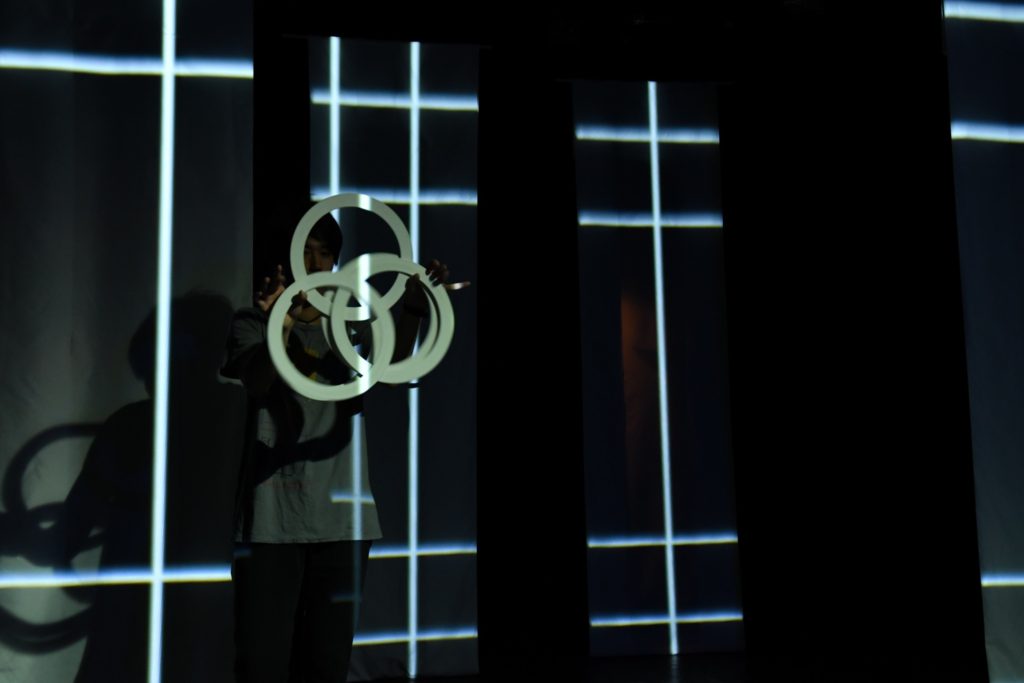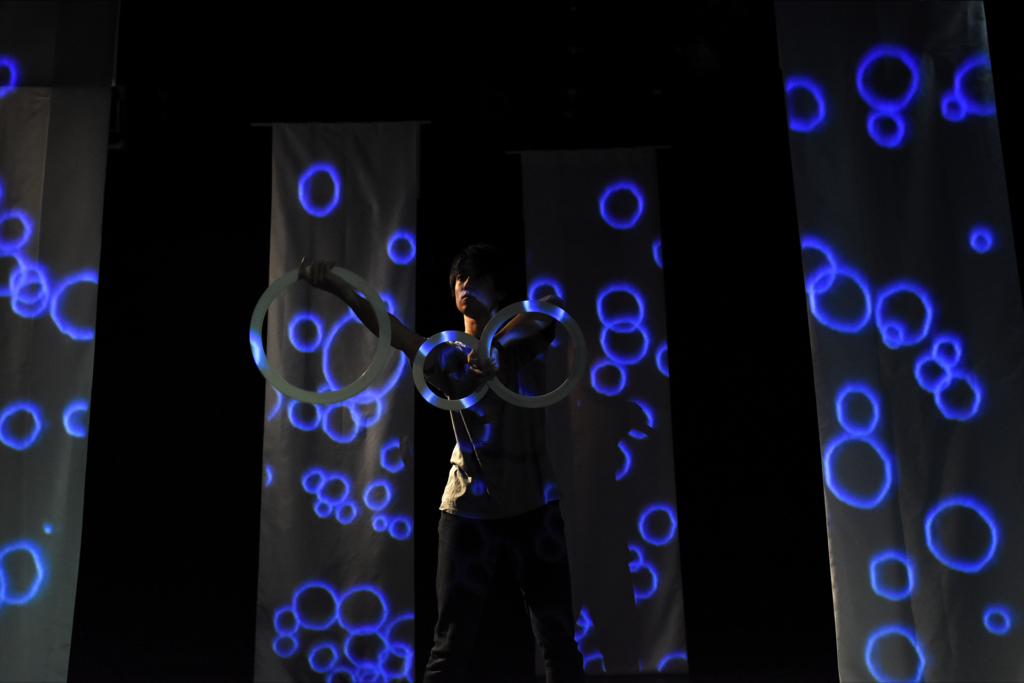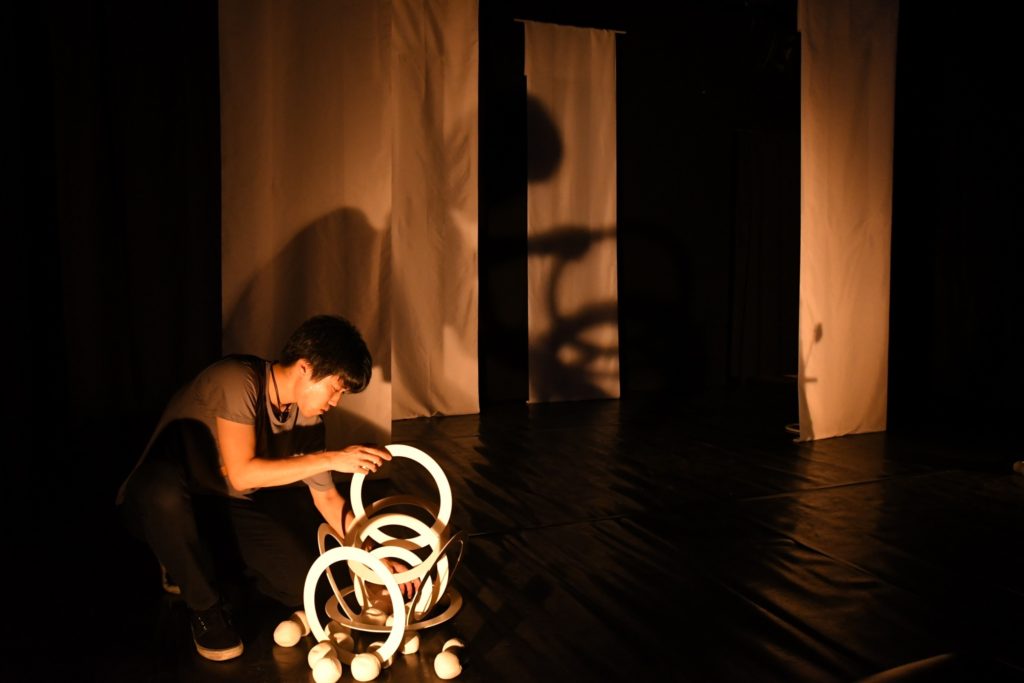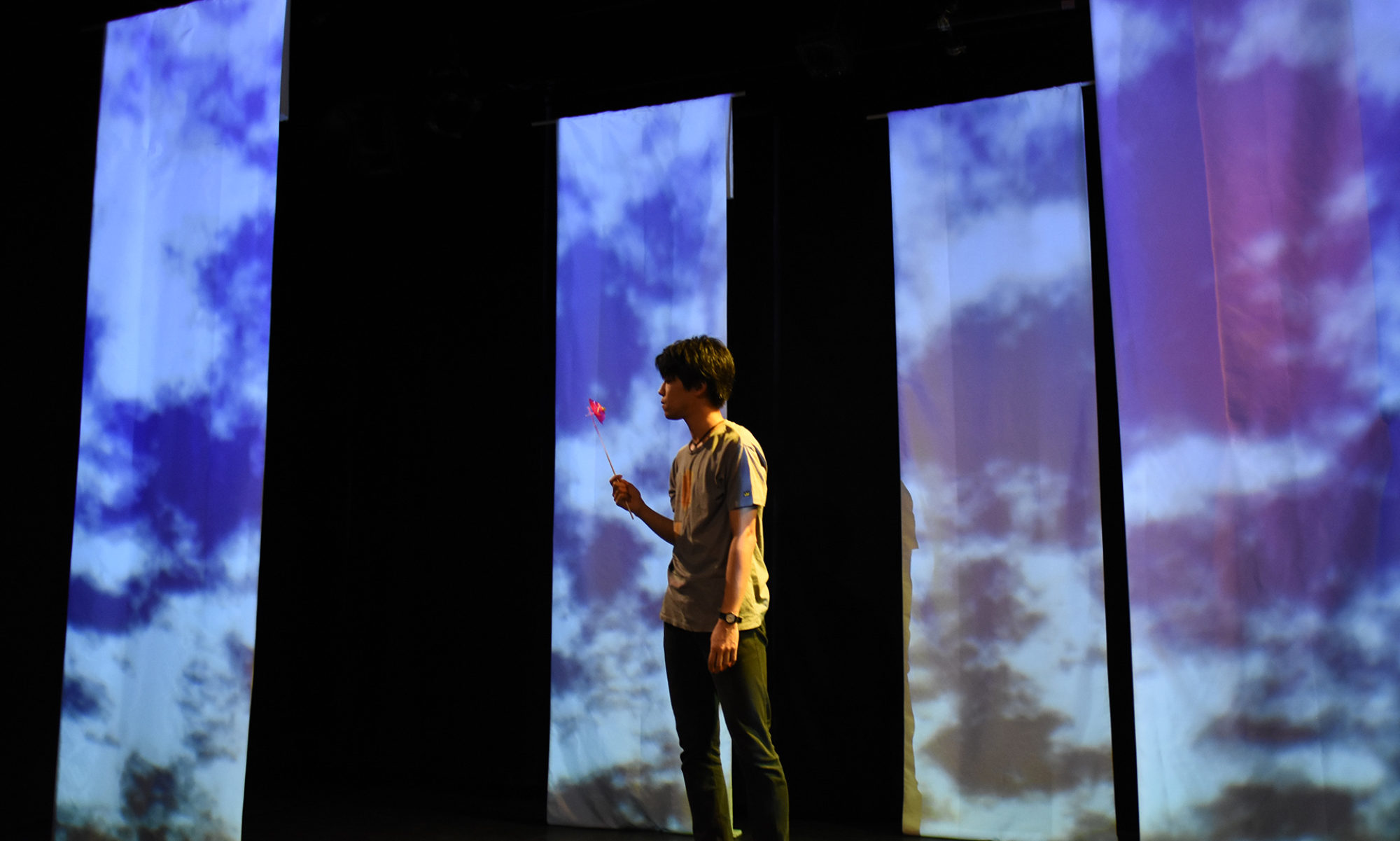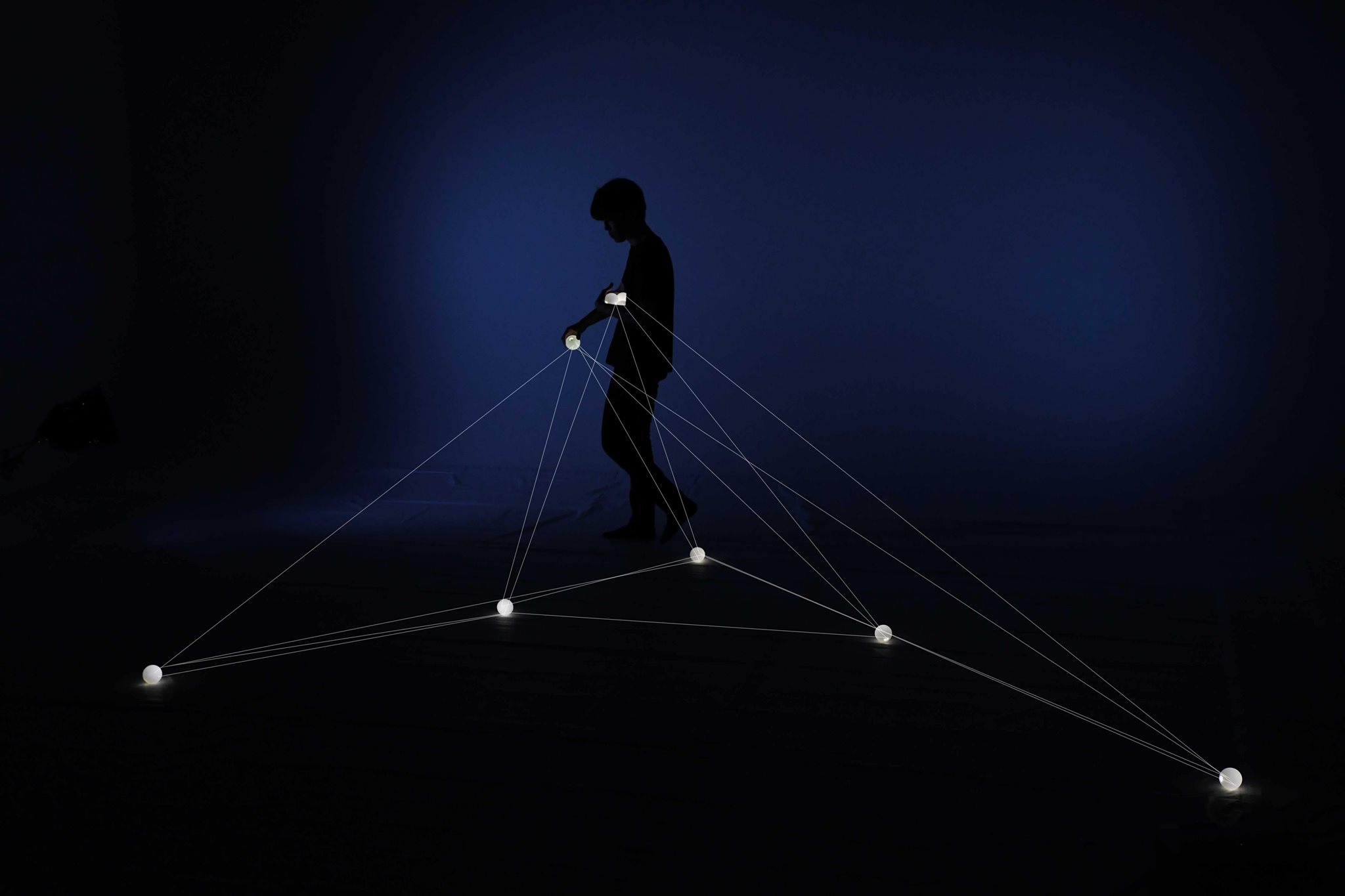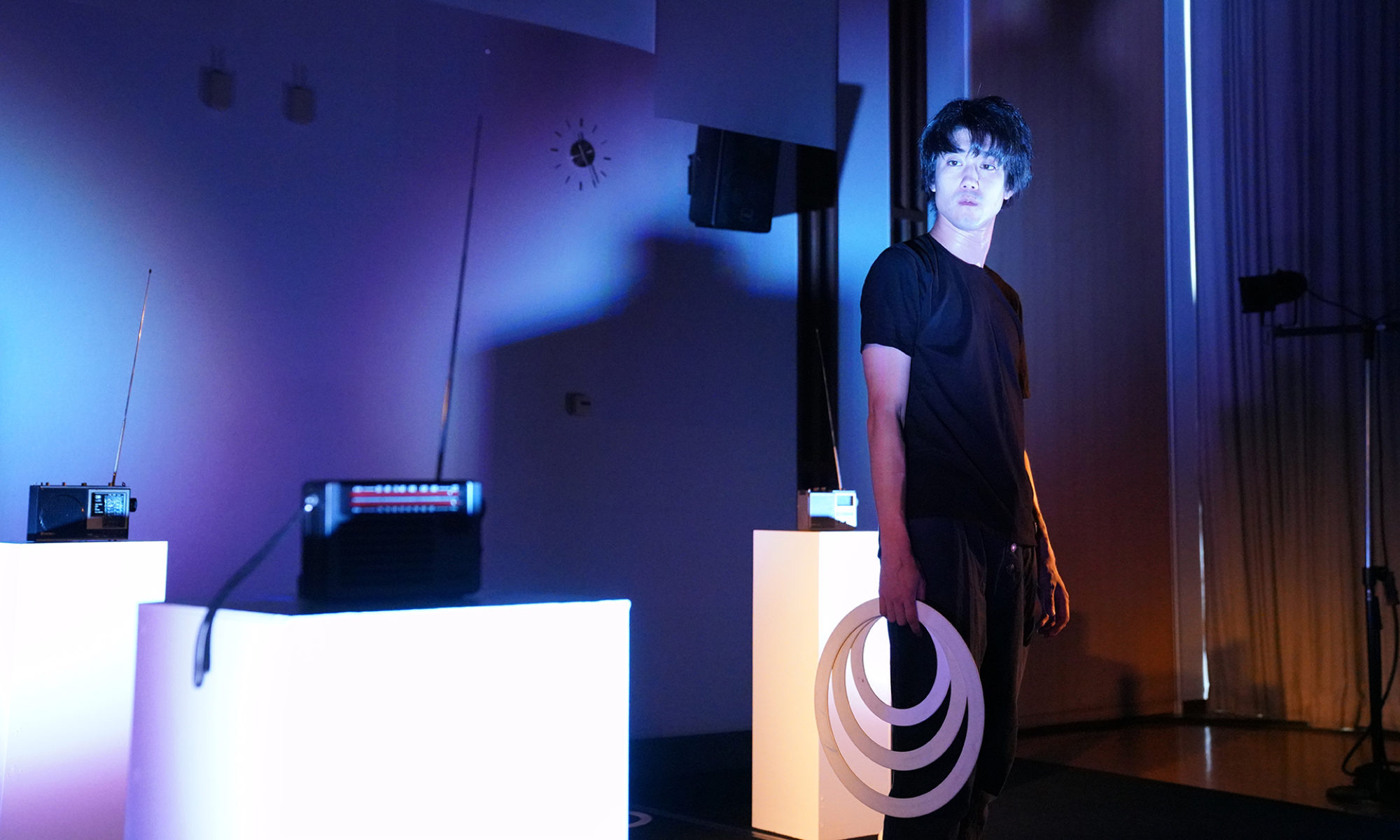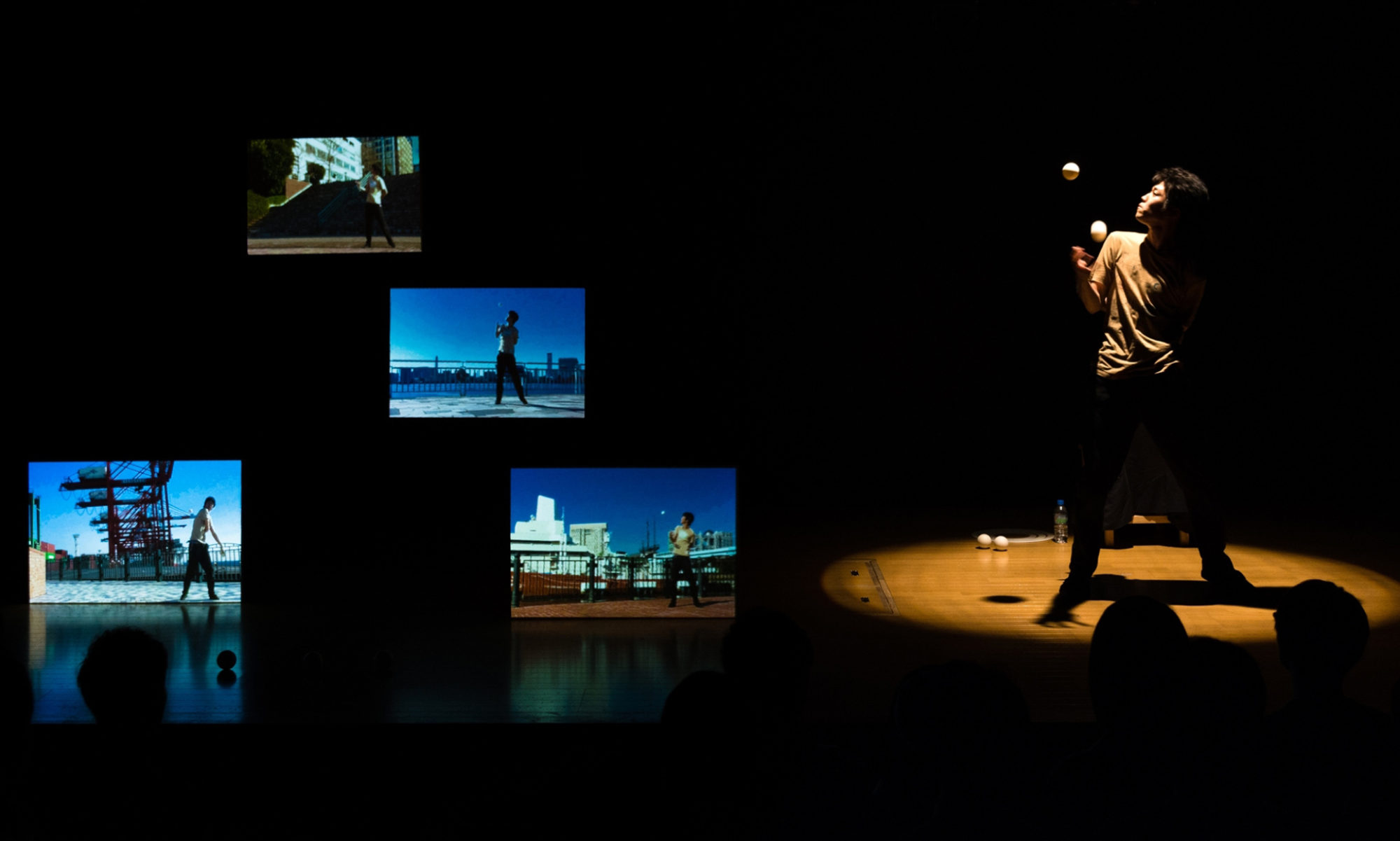(Performance, 60min 2017~)
懐かしさや悲しさや優しさなど、ものに染み付いた「クオリア(感覚質)」を、関わり方を選ぶことによって引き出し、拡張することができる。
通常ジャグリングで行われる動作、例えば、投げる、挟む、落とす、噛む、載せる、といった動作はものの「形状」から発想する関わり方で、ものへの「アフォーダンス的なアプローチ」であると言える。だが、例えば、風車などはその物自体に「無邪気さ」「不気味さ」といったクオリア(感覚質)を持っており、このクオリアから発想するものへのアプローチもある。風車を持った人がそれを大事そうに両手で持ち、見つめることでその「無邪気さ」や「不気味さ」などを強調することもできるだろう。
さらに、「アフォーダンス的にも新しく、それによって感覚質も引き出される」という行為がもあることを、ジャグリングを通じてものとのかかわり方を試行してきた岡本は知っている。前述した風車の例で言えば、大事そうに持ったり見つめると言った行為でなく「丁寧に羽を分解して部品を並べる」という行為によっても「無邪気さ」や「不気味さ」というものが強調されるかもしれない。岡本がジャグリングで培ってきたのはそういったものへの感覚である。それはひとえにものの記憶と私の記憶を、新たな視点でもう一度重ね合わせることである。
The “qualia” (sensory qualities) that are ingrained in objects, such as nostalgia, sadness, and tenderness, can be elicited and expanded by choosing how to interact with them.
The movements usually performed in juggling, such as throwing, pinching, dropping, biting, and placing, are an “affordance approach” to objects, as they are based on the “shape” of the object. However, windmills, for example, have qualia (sensory qualities) such as “innocence” and “eeriness,” and there are approaches to things that are conceived from these qualia. A person holding a windmill with both hands and gazing at it as if it were precious could emphasize its “innocence” and “eeriness.
Okamoto, who has been experimenting with ways of interacting with objects through juggling, knows that there is also an action that is “affordantly new, and that also draws out the sensory quality of the object. In the aforementioned windmill example, “innocence” and “eeriness” may be emphasized by the act of “carefully disassembling the wings and arranging the parts,” rather than by the act of holding or staring at the windmill as if it were precious. What Okamoto has cultivated through juggling is a sense of such things. It is simply a matter of superimposing the memory of the object and my memory of it once again from a new perspective.
Direction/Performance : Teruki Okamoto
Production : Room Kids
